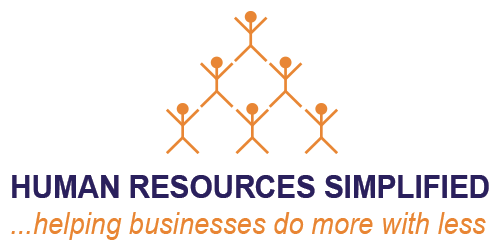 Q: The first few weeks and months after hiring a new employee are critical for the mutual success of this hiring process. Onboarding is also known as organizational socialization and was previously known as company orientation. What would you describe as a modern definition of onboarding as it pertains to the human resources function?
Q: The first few weeks and months after hiring a new employee are critical for the mutual success of this hiring process. Onboarding is also known as organizational socialization and was previously known as company orientation. What would you describe as a modern definition of onboarding as it pertains to the human resources function?
A: I think that “Onboarding” is a concept that has, to some extent, evolved similarly to how Human Resources has changed over the years. Where “Personnel” was generally a record keeping/compliance function, in today’s progressive organizations, Human Resources handles most of the administrative functions of the past but has also moved into a more strategic role in shaping management practice and preparing the organization for the long-term perspective. Onboarding is a critical foundation building function that prepares an employee to operate effectively within the current and future culture that the organization is striving for.
Q: So, the process is a multi-step one that involves an introduction to the company, the department, and the actual job?
A: Yes, it is these various steps. But it needs to be much more. It goes beyond the introduction phase after the employee is hired. It begins during the candidate selection phase. Shaping the organization’s employee brand is an essential element so that the ‘right’ employees come into the sourcing process to improve the quality of candidates, and where candidates can carry the brand to others, whether they are hired or not.
This means the process involves clear goals and training for all staff with the appropriate tools to shape the messages and tone of all communication to anyone touched by a connection to the company. Once selected and accepted, the onboarding process continues even after the initial orientation activities. It can involve follow-up on multiple topics both work related and personal. The intent is to plant the desired culture that supports the long-term objectives of the organization in a fashion that makes the individual feel ‘this is really the right organization for me’ and want to stay, grow and contribute for the long haul.
Q: Just out of curiosity, is there also a term called offboarding in human resources?
A: That is an interesting question. I expect that organizations do have to deal with offboarding, but it falls under a variety of other labels. Realistically, not all hires will be just right and may need to leave the organization. However, the idea is to minimize such hires where the offboarding occurs in a relatively short period after hire, due to inappropriate selection.
The other aspect of the process is where changes occur either in organization direction and needs to individual interests, skill levels or circumstances that no longer are cohesive and a parting of the ways is desirable. One aspect to note in this process is to be sure that the employees who remain with the organization see this process handled effectively and consistent with stated cultural values.
Q: I understand that today’s onboarding is much more inclusive and expansive than traditional orientation programs, can you explain?
A: As I noted previously, the onboarding process covers more topics, with greater depth, over a longer period of time. But a primary difference from the typical new hire orientation, where you can almost have a one-to-two page standard check list of orientation tasks, an effective onboarding process is very much a program unique to each organization and to some extent job specific.
Consequently, preparation requires a fair amount of organization assessment, beginning with the strategic plan and involving analysis on anticipated organization change, and then tailoring the pieces to support the desired objectives, while at the same time meeting the initial needs of getting the employee prepared to start the principal position for which they were hired.
Q: I read on the Society for Human Resources Management website that 90 percent of employees decide whether to stay or go within that first six months. Employee turnover is expensive. How does a successful modern onboarding program reduce turnover?
A: The sooner a poor placement is discovered the better. But, unfortunately, the higher or more influential the position is, the longer the turnover is likely to take. Damage is often done during the whole period.
Remember that employee turnover comes from two perspectives: The employee, and the organization management. Therefore, the onboarding process must involve training management as well as doing the best possible job of selection and extensive information sharing with candidates. They can’t see inside the organization any better than the organization can know the individual in-depth during the selection process. The prime objective is the get the best possible collaboration between the two, so everyone is a winner. A poor fit costs time, frustration and money. The stats show anywhere from 35% to 120% of the annual income in hidden costs for a poor hire. That is big-time money.
Q: What are some modern strategies to create a successful program?
A: I’m not sure there are ‘modern strategies’ to create a successful program, but what is necessary is to apply some very basic tools in a comprehensive fashion. Like with strategic planning, it starts with the establishment of clear measurable goals. This is then followed up with a detailed SWOT analysis of the various aspects of the existing programs and the identification of areas not handled but needed. This information is utilized to shape the pieces required for the new onboarding process which needs to be implemented with knowledge and support, including enforcement when necessary by top organization leadership. The last and rather important step is measurement against the stated goals. And don’t be afraid of program adjustments, when circumstances warrant.
Q: Should all organizations aim to create a program that works to welcome and facilitate new employees to adapt to their jobs, regardless if big or small, for-profit or non-profit? Are there ideas that small businesses or non-profits can use to create a program that will be effective and save the company money?
A: This is a really good question. As for the type of organization, I don’t believe that is critical. Size and the number of employee changes will be more important. My prior comments about the unique aspects and goals of the organization are critical design considerations.
Too often consultants will create a program and say this is what you have to do. The program may be ideal for many, but it is essential each program be designed around what the organization can and is prepared to accept. It may be best to develop a plan that can be implemented in stages. Knowing where you are going is more important than getting there in one fell swoop.
Q: Can you give me an example of a successful company onboarding program?
A: I’m not certain we should respond to this question because that might lead an organization to select a program without doing a proper analysis of their own organization. An internet search will allow the researcher to find a list of the top 10 or best of class onboarding articles. For me, this is starting with the solution rather than defining the problem and then looking for the right process. I believe the assessment of success depends on where the organization started, it’s turnover rates, the industry, multiple other issues.
Q: Are they are rules of thumb for how long the program should be?
A: I think to be effective, the formal program should have active elements covering about six months. These should be integrated into other employee engagement practices to re-enforce the values and concepts of the onboarding ‘foundation building’ process.
Q: What methods are used to evaluate these programs by the new employees and by the companies?
A: Feedback from the employees can be gained by periodic surveys at select points in the process. The evaluation process for the organization is the measurement assessments designed into the program matched against goals.
Q: Are there any U.S. laws that pertain to employee onboarding?
A: I’m not aware of any specific laws directed specifically at onboarding, but all the rules on non-discrimination against protected classes of individuals would apply to all employee interactions.
Q: What books would you recommend for learning more about this topic?
A: There is a presentation on the LinkedIn website called “onboarding in a box” that may be helpful for people trying to get up to speed. It also has some other references that may be useful.
Q: In conclusion, what other words of wisdom do you have on this important function which falls under the training, a/k/a talent development area?
A: The key to the success of this process is its alignment with the long-term objectives of the organization. It is a program that needs continuous support and should be a foundation on which other programs of engagement and development can be built. It should be treated as an integrated process, not a one-time event.
Ardon Schambers has over 40 years of professional HR experience and is the President and Principal of P3HR Consulting and Services in Grand Rapids, MI. He worked for world class companies including General Telephone, Bell & Howell and Steelcase, where he was the Director of Compensation, Benefits, and International Human Resources. He can be reached at http://www.p3hrcs.com/

Jean (JJ in HR) is a certified senior-level human resources executive/consultant, adjunct professor, management trainer, professional speaker, resume writer, career coach, LinkedIn profile builder, and published author.










